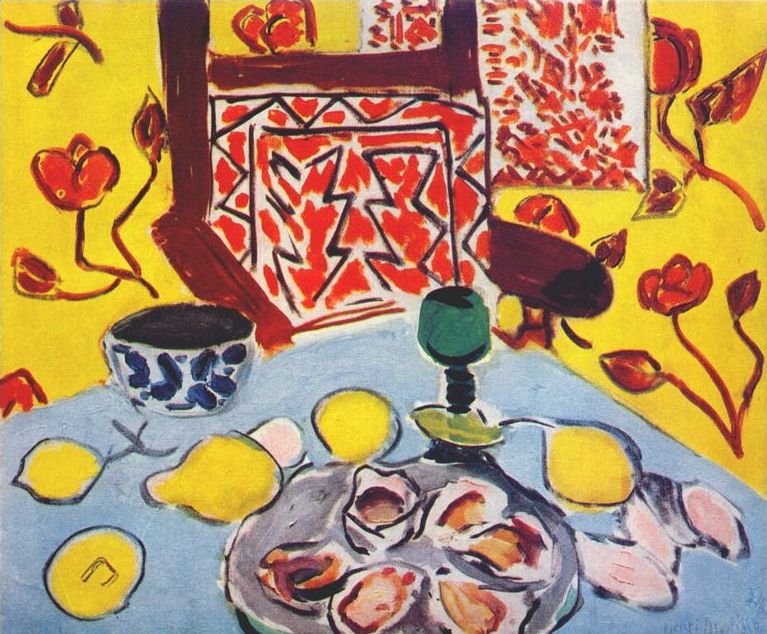Don’t Eat the Models: Oysters and Wooden Armchair, by Henri Matisse
Barbara Stehle
→ former Lecturer, Interior Architecture
 Henri Matisse, Oysters and Wooden Armchair, 1943
Henri Matisse, Oysters and Wooden Armchair, 1943The year is 1943. France is occupied by the Germans. The aging painter Henri Matisse has left Paris to settle in the South of France. In his studio, Villa Le Rêve (the dream), Matisse has arranged a composition of oysters and lemons, a glass and a bowl on a blue tablecloth.
Matisse loved oysters. He featured them often in his late still life paintings. In association with lemons, oysters represented the solar and carnal sensuality of the South of France.
It is close to lunchtime.
Matisse is still at the easel; the room he depicts is charged with energy. In it, the blue table offers a quiet pause, a peaceful sight against a vibrant background of red patterns on the yellow walls. Out the window, nature is made of broken shapes, the blinding effect of the midday light is strong. A wooden seat is set, upholstered and grand, awaiting the eater.
The painter will pause for lunch.
But these oysters are not on the menu. The artist had a particular attitude toward the food he painted—he refused to eat it. Matisse always worked in front of a live model, human or otherwise. He felt it would be strange to ingest his subjects.
These oysters will be sent back to the restaurant from which they were borrowed. New ones will be brought up to the studio later.
To this day, Oysters and Wooden Armchair offers the promise of a good meal—so rare in wartime. But for the painter, edible models gained an elevated status and were to be consumed only with the eyes.
Dr. Barbara Stehle is an independent scholar and founder of Art Intelligentsia.